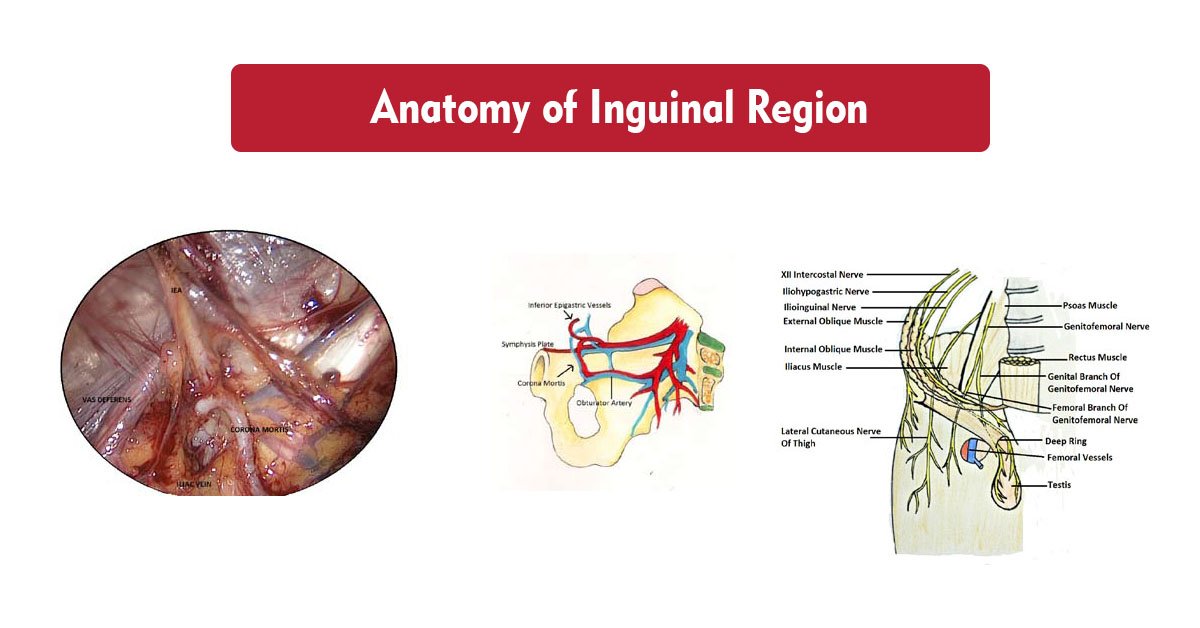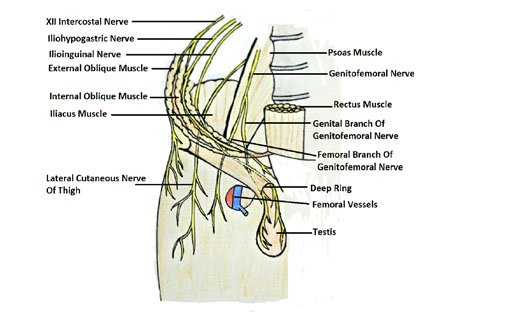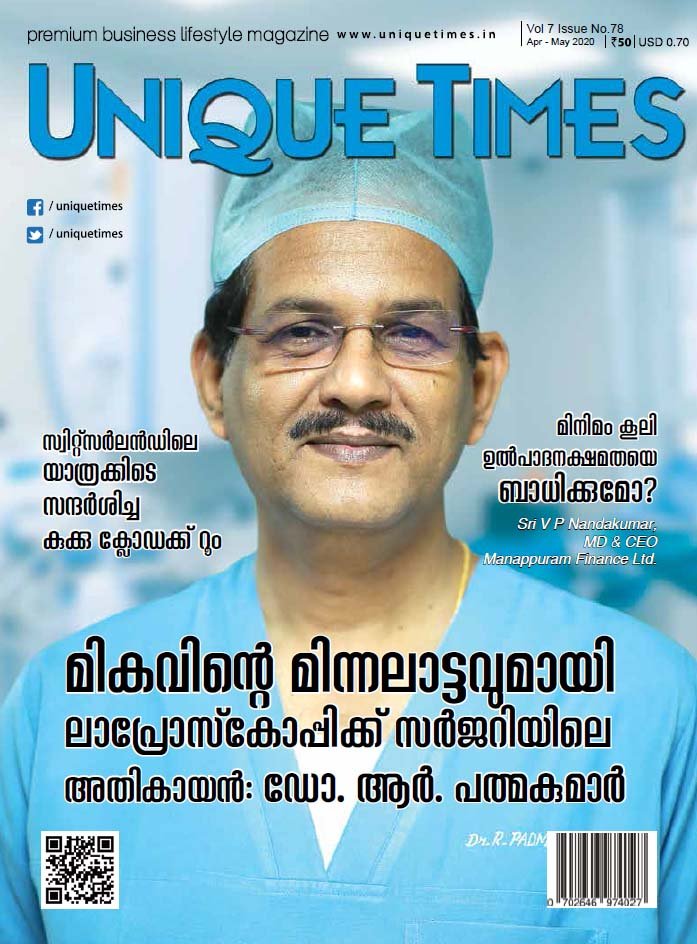Inguinal Region – Anatomy, Part 2

Transversalis Fascia (of Gallaudet)
This fascia is a two layered structure (bilaminar). The anterior layer is adherent to the rectus abdominis muscle. The posterior layer lies in between the anterior layer and the peritoneum. It divides this space into an anterior (vascular space) and a posterior (Space of Bogros). Medially it is continuous with the space of Retzius. One should work in the space of Bogros to prevent unnecessory oozing.
Prevesical space of Retzius
The preperitoneal space that lies deep to the supravesical fossa and the medial umbilical fossa is the prevesical space of Retzius (Described in 1858, by Swedish anatomist Anders Retzius). This space contains loose connective tissue and fat.
Important structures in this space are:
Arteries
- External iliac artery
- Inferior epigastric artery and its branches
Veins
- External iliac vein
- Inferior epigastric veins
- Deep venous circulation
Nerves
- Lateral femoral cutaneous nerve
- Genitofemoral nerve
- Femoral nerve
- Ilioinguinal nerve
- Iliohypogastric nerve
- Lymphatics and lymph nodes
Pubic branches:
-The inferior epigastric artery gives rise to anterior pubic artery, which accompanied with the iliopubic vein crosses the superior pubic ramus. In 25-30% of individuals, the anterior pubic branch is large and can replace the obturator artery. This large arterial branch (Aberrant obturator artery) can partially encircle the neck of a hernia sac and be injured in a femoral hernia repair. It could also be injured while dissecting on to the Cooper’s ligament. So the whole anastomotic ring is known as the – ‘Corona Mortis’ (circle of death) (10).


Deep venous circulation of the preperitoneal space (Bendavid): –
The venous circle/ deep venous circulation of Bendavid(11) is located at the subinguinal space of Bogros. It is a network of deep inferior epigastric, rectusial, suprapubic and retropubic veins. These are important because damage to these vessels is easy and usually leads to haematoma formation.
Nerves in the inguinal region: –
The following three nerves are at risk for injury during dissection-
- Lateral femoral cutaneous nerve
- Femoral branch of genitofemoral nerve
- Obturator nerve
The following nerves are usually not at risk during dissection, but can be injured if excessive pressure is applied during mesh fixation.
- Ilioinguinal nerve
- Iliohypogastric nerve
- Genital branch of genitofemoral nerve

About Dr. R. Padmakumar
Dr. R. Padmakumar is one of the Best Hernia Surgeon in India. He has been changing lives through Keyhole Surgery. He has got more than 30 years of hands-on experience in laparoscopic Surgery in major hospitals across India and has completed more than 7000 cases of Laparoscopic Hernia Surgeries. Dr. Padmakumar has trained more than 300 surgeons from all over the world the art of laparoscopic surgery especially Laparoscopic Hernia Surgery. Dr. Padmakumar is also hailed as one of the Best Bariatric Surgeon in India & UAE. He is renowned for new and improved treatment techniques and the first in the World to perform Scarless Bariatric Surgery with Tummy Tuck / Abdominoplasty. He is also one of the very few thyroid surgeons in India doing Endoscopic Thyroidectomy (scarless thyroid surgery).


-
Anal Fissure Treatment
- Piles / Hemorrhoids Treatment
- Varicose Veins Treatment
- Laser Treatment for Varicose Veins
- Diabetic Foot Treatment
- Gynaecomastia





